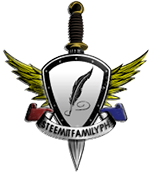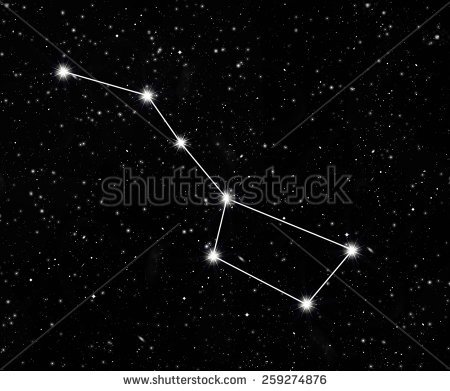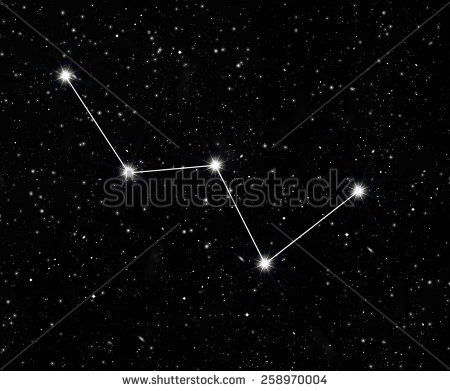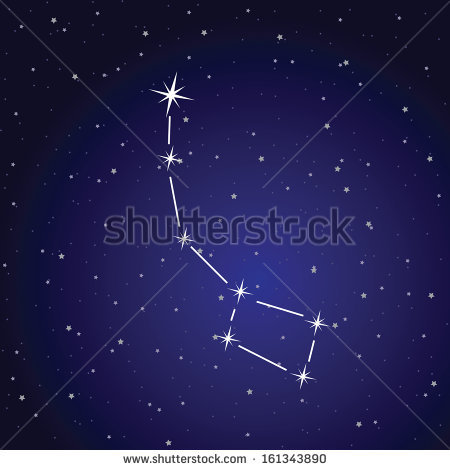Sail Of Time - Sharjah's Ancient Sea
"Some of us think that the Middle-East consists of cities or countries in the Arabian peninsula, full of desert, dates tress, and camels. But do you know that it has a rich maritime heritage that we all didn't know? From rich marine wildlife, there is also old boats, and equipment they are still using and some are preserved until now.
One good example of this is the Emirates of Sharjah. Despite the fast-growing economy of United Arab Emirates, Sharjah manages to preserve its maritime heritage. Sharjah maritime museum is a place to see and learn what it is before this raging metropolis we are seeing today.
While spending my day-off resting, I eventually think of riding my motorcycle and drive to where my intuition tells me to go. I felt like stopping here at the museum and check-out what will the history of Sharjah has to offer."

After a long week working finally it was my off, I am inside my room doing nothing not until I look out of my window. The great sun shines so bright as I think of any activities I could do. First thing I did is take a bath and look at my room, it was clean so I don't have to make myself busy cleaning it. I look outside again and saw a ship passing by the corniche.
Corniche: It's how they called the coastline here in the middle east
Yeah, The Emirates of Sharjah have a lovely coastline surrounded by beautiful dates tree. I was thinking how did people live their lives before this massive development they had in UAE?
When I was in Al Ain, I saw old clay buildings everywhere making me conclude that UAE has a rich heritage way back in time. Those small towers of clay sometimes have its battle marks on it, giving us the impression of a hard-fought battle.
Ever wonder what those towers looked like?
Ok, enough with those towers!
Combined with my curiosity and fascination with the ship that passes by, I start to think of how the people in Sharjah benefited from the alluring seas they have. With this new question I in mind, I found myself dressing up and preparing all my stuff getting ready to go.
Are you packed-up? Hop on it!!
Sharjah is one of the coastal areas in the United Arab Emirates. You can see the abundance of marine resources throughout the Emirates with its large fish market and a massive number of fishing vessels lined-up along the coastline near The Heritage area, Waiting to load up and go fishing. But because of security reasons by the time I'm touring around I never got a chance to document it and show it to you. So, I drove along the coastal road checking this fishing boats and I was thinking what does it look like centuries ago?
As I have read before, People of Sharjah and Ajman believes that civilization exists in their region since the bronze age. Many artifacts found in different places that serve as a hard evidence that people do settle in this lovely place.
This bronze age pendant was discovered by the archeologist in Sharjah, is believed by some to be an early illustration of a ship with a lateen sail. This evidence adds weight to the theory that the LATEEN sail originated from Arabian lands.
As I moved forward, I saw an old shattered boat. I got more curious so I grab my mobile phone and search for more historical spots around the area, and guess what I've found? Sharjah Maritime Museum.
Info: Sharjah Maritime Museum is open every day.
Prices: 10dhs for just the museum; 25dhs, if you wanna view the aquarium as well.
Moving On!!
As I arrived at the museum, I noticed a flock of birds laze all over the harbor they seem to relax as they respire the cool sea breeze. I stayed for a while watching them and thinking what should I expect entering a museum that themed for this beautiful sea. I am filled with elation just thinking what can I learn inside. So, without further ado, join me as we explore and learn about Sharjah's maritime history.

Sharjah's maritime history is believed to be dated as far as the bronze age where people of the Emirates rely on as their common source of food and subsistence. When you go around Sharjah you will notice very the lively fishing activities around the shore as evidence that marine resources in this region is abundant.
Inside you will notice almost all types of marine animals that exist in the area. From large to small kinds of creature living beneath the ocean. There are sharks to terapos as you see in this photo. These lavish waters make the Emirates as one of the main locations for trades across the Gulf region.
The United Arab Emirates ' body of water are wealthy, with more or less 500 marine species inhabits the Arabian Gulf like Dugongs and Dolphins and many more in the Indian ocean. Inhabitants of this aquatic world came from came from a mixture of African and Asian species. Coral reefs and Mangroves creeks can also be seen all over UAE makes a perfect home for marine creatures. We have to take care of it cause it takes more than a decade to re-grow.
One of my favorite marine species that I saw is this dragon-like creature. According to the aquariums display boards, this is called undulated moray eel. It is commonly found in Indo-pacific waters in the depths of 30m. Its length is 1.5m long. Look how scary those species are? They're like dragons that's ready to devour you.
I was observing them carefully as one of them open that huge mouth like a phyton under the deep. They are so still and only wraps around the rock pillar, There is three of them.
I keep moving forward checking all of these fascinating marine animals that I have never seen up close and personal in my whole life.
Here's more photos of what I saw...
Emirati people benefit from their vast marine life before the discovery of oil in this region.
The Ancient Seas
Rocks and fossils of the Arabian Peninsula and across the Middle East prove that million of years ago tropical seas existed in this area. The fossil marine shells and sea urchins seen in this photo comes from a place here called jebel or local limestone hill. The fossilized fish is are also been found in a limestone rock..
Lu'lu or The Sea Moon This pearl, believed to be one of the oldest in the world, was found here in Sharjah. It was discovered by an archeologist in a coastal grave site believed to be around 7,000 years old.
Pearls from the Gulf of Arabia have been treasured for their beauty since early civilization.
The sea not only provided a source of food to the early people of Sharjah. It also provided tools for everyday life. Fig shells like this one were used as natural baby feeding bottles to feed infants over about 2,000 years ago, a practice continued up until the recent time.
The image on the top right shows how they used the suckling shells and the one on the right is the actual looks of it. It's about two inches wide and 4 inches long with a hole in the top and a scoop like where they put the milk.Dawn of The Sea Trade
They said that over 4,000 years ago maritime trade became well established, and a wide range of goods was brought to this region. This pot was made in Bahrain formerly known as Dilmun back in the ancient times and was traded across the sea to an ancient port 30 kilometers north of Sharjah, now known as Tell Abraq.
The ivory comb, made from an Indian elephant tusk, is evidence of trade with the Indus Civilization located in Pakistan and northwestern India. The people of the Arabian Peninsula also traded extensively with the states and empires of southern Mesopotamia also known as modern Iraq and western Iran. Copper from the mountains of Oman was also exported to Tell Abraq.
It is said that before the birth of the prophet Mohammed the Arabian people had established international trade links. This glazed Pathian jar probably originated in Iraq, a trade link which lasted for thousands of years and this blown glass perfume bottle is in shape of a miniature amphora, and came from one of the provinces of the Roman Empire.
The Pearl Trade
The Gulf of Arabia has been host to pearl fishing for thousands of years. Gulf pearls have always been regarded as the most beautiful in the world. No region has produced more natural pearls. Locally, pearl fishing is known as GHAUS.
Pearl merchants are the one who's in charge of the pearl trade. In Arabic they are known as TAWASH. In Ancient Sharjah there are two types of Tawash, They are:
Land Tawash - This merchant held a prominent position in society and was often appointed by the Ruler as a judge and mediator in disputes. At a time when most of the population merely scratched a living these men were extremely wealthy. They were able to finance diving trips and at the end of a season, captains would visit their homes to sell their haul of pearls to them.
Sea Tawash - Was dealt directly with the pearl boat captains at sea during the main diving season, traveling in a small mashowa boat between the pearling ships, and being invited on board to negotiate a price for newly discovered pearls. If the captain had nothing to sell he would say "Allah Kareem"(God is generous), meaning "perhaps tomorrow, Inshallah". There were strict rules of conduct for a sea Tawash:
- a Tawash could not board a pearling boat until the crew had finished opening all the previous day's shells.
- a Tawash could not board a vessel while another tawash is on board.
- a Tawash could not disclose the price paid for pearls to his colleagues.
Being a Tawash is not an easy job. They are not only accountable for mediating conflicts but also for inspecting and trading. Here are some tool they used for their pearl deals:
- Malaqet el lulu - pearl tweezers.
- Dorbeen - jewelry's magnifying glass consists of two magnifying glasses and used by the pearl trader (tawash) to examine the pearls.
- Mukber - Magnifying glass with an ivory handle.
- Mibrad - small metal file with an ebony handle used to refine pearls.
- Sikeen - small metal knife with bone handle used to clean pearls.
- Eemsen - whetstone for sharpening tools.
- Methgab - pearl picks with wooden handle.
- Metta - Jeweller's bow-drill for making holes in pearls.
Here's more
A Trading Hub
Due to the Arabian Peninsula's strategic position between east and west it has been a center of international trade for many centuries. 4000 years ago copper was mined and smelted in the Hajar mountains and exported from the ancient coastal site of Tell Abraq, in exchange for exotic goods from India, Iran, Iraq, and Bahrain. Imports included gold, ivory, carved stone vessels, pottery, oils, grain, and textile.
Maritime commerce flourished here during the time of Greek and Roman empires. Arabia was fabled in the west as a land of mystery and incense and was already celebrated for its pearls. Boas from Arabia, Persia, Indi, and Egypt crisscrossed the seas, carrying a bulk of commodities and luxuries, including fine glass, to sites such as Dibba on Sharjah's east coast, from where it was transported inland.
It is believed that in the 7th century AD, the port of Dibba, on Sharjah's Indian Ocean coast, was a very important trade post. Described by the ancient Arab writer Ibn Habib as "one of the two ports of the Arabs", merchants from as far away as China are said to have visited. Each year, Dibba held a great market lasting for five nights which was controlled by the JULANDA, last pre-Islamic rulers of the region.
Sharjah's main export main export in recent centuries was pearls, along with dates and fish. India was the chief trading partner supplying food, spices, timber, cloth, metal, medicines, and manufactured goods to Sharjah's growing population, but trade with East Africa, Iran, and China were also significant. Chandals or mangrove poles are used in the building were brought from East Africa.
Merchant Mariners
Local merchant captains or they called it nawkhda were Arabia's early entrepreneurs. These adventurous traders would voyage across the Gulf, around the Indian Ocean to India, and down to Africa's east coast, buying and selling in each port they visited and returning with a huge variety of goods from many different places. Trade routes depend on the seasonal monsoon winds, so boats would often be at sea for months.
"My father traded in clothes, and food supplies such as sugar, rice, and flour because at the time all these were scarce and people were generally poor. And his trade route was usually focused along one line from Karachi to the Iranian coast to Dubai. As for myself, I was trading in a larger variety of goods including wool. Also, I transported goods for other merchants whereas my father only traded for himself, and I traveled further than him from Bombay to East Africa." - Ali Abdullah Raheem Al Mirza. Merchant Mariner, Khor Fakkan
Nukhada or the Captain, was the absolute master of his ship. He could rule his crew with a strict hand but was highly respected by his men. Their well-being and that of his families was in his hands. The captain was responsible for choosing the dive location or ha'ir and overseeing the opening of the oyster shells. All pearls brought to him were put away for safety in his pearl box to be graded and sold at the end of the voyage or when a pearl merchant tawash came aboard.
Captain of the ship never go sailing without his equipment, Here are those:
- Bishtakhta - large wickerwork chest used by the captain or nokhitha to store his tools, clothing and other items when at sea.
- Pearl chest - made from teak wood used by the captain which would contain his most precious possessions including all in the photos, a set of folding pearl gauges with 44 grades, a knife for opening oysters, a weight scale, and a hand compass.
- Mahhar - oyster shells/oysters, are sea creatures which live on sandy and rocky seabed.
- Mkhammal - traditionally used for holding weights.
- Muzawin - a small set of measuring scales.
- Tous - a small set of graded pearl sieves.
The pearling boat's crew members were normally paid in advance by the nukhada. This enabled to support the families they were leaving behind. But a bad season, without enough earnings to cover the loan, placed the sailor in debt so he had to work the following season to pay this off. At worst, the debt was passed from one generation to the next, placing a family in perpetual servitude.
Pearl diving is hard and a dangerous job that's why they need to wear a set of protective clothing or known as Shamshul to protect them from anything that might happen while they are collecting pearls.
Divers often wore cotton suits or libas al-ghaws to protect them from jellyfish stings. Nose clips or ftam made from goat horn or tortoiseshell were essential to help submerged divers hold their breath. Leather caps or khabat were put over fingertips to protect them from cut and scrapes. A basket called dayyin for collecting oysters was carried around the neck.
Here are the actual photos of the following equipment that the divers bring underwater:
Sailing by the stars and sun
For centuries the Arab sailors used natural guides to navigate. They steered their course by the stars and used the sun to judge the time of day and determine direction. Tide, currents, bird life and distinctive landmarks also helped identify their position. This knowledge sometimes recorded in manuals, but often passed unwritten down the generations by word of mouth.
Knowing the star constellations was vital to find your way at sea. In Sharjah, there are four constellations that can be seen in the night sky. Those are:
The Kamal measured the altitude of the North Star, which is used to determine latitude. A rectangular board was held with its bottom surface level with the horizon. A cord with evenly spaced knot was attached and held by the other hand. The board was moved away until its top was level with the star. Latitude was determined by counting the number of knots passed.
Here are some of the equipments they used during sailing:
Fishing in Sharjah
Aside from diving for pearls, people of Sharjah's one source of livelihood is thru fishing. The fishing takes place throughout the year . The fishing boats go to sea during the breeding season from March uuntil May. In the breeding season the spawn increases and the number of fish also increases especially Sheiry or the Emperor, Farsh or the sweetlips, and Hamour or gouper. All these fish lay their eggs when the Pleiades constellation disappears from the horizon.
One way to find fish is, if the sea color becomes brown or gray and the sailor easily knows which kind of fish he can find there. And he also knows by the movements of the seabirds above.
Fishing Methods
Seine Fishing - Winter time brings sardines and anchovies close to the coast. Fishermen use seine nets to catch them. Seime nets have floats on the top and weights on the bottom so they hang in the water vertically. The fishermen trap the fish between the net and the shore and pull the ends of the seine, dragging the catch onto land.
Gargour is an indigenous dome-shaped trap used to capture fish unharmed. It is weighted to the seabed with rocks. Fresh or rotting fish are placed inside, to bait larger fish into a one-way tunnel. Traps are made in different sizes depending on the size and type of fish to be caught. Double ended traps called dobaia are also used.
Fishing Equipment
There are many kinds of fishing equipment used for fishing like the Fishing Nets. There is archeological evidence of net fishing going back into antiquity. Traditionally, fishing nets were hand woven by local fisherman, but this skill is being lost due largely to the popularity of modern manufactured nylon nets.
Using of hooks to catch fish is one one of the oldest methods of finding food and of course, is still in use today. Fish hooks dating back 5000 years have been found at some of Sharjah's coastal archeological sites. These prove that line fishing has been carried out in the Gulf since ancient times.
Here are more equipment they use for fishing:
As we can see Sharjah is very active when it comes to trading but not only that they are also active when it comes to fishing. So, how does all of this activities will work without a boat or a ship? Nowadays, Ships were made of metals and heavy-duty materials and equipment available, but back in the old days they built a ship from fine cuts of woods, nails, and fabrics, and they do it manually.
Up to this day, fishing is one of the common livelihood here in Sharjah. When you pass by Al Jubail bus station you can see fishing boats lined-up all over the coastline. Not so far from it is the Sharjah Fish market where you can buy fresh fish. Ships and boats are used not only for fishing and pearling but for the military as well.
Ships and Boat of the Ancient Sharjah Ancient Sharjah people rely most on their bodies of water, and that wouldn't be possible without a means of transportation. They build boats and ships to help them in gathering and trading resources all over the Gulf region.
Let's build our boat!
Marine transportation is so essential back in those days wherein there is no air transportation yet available. They build everything manually using tools that help them ease the job.
Here are some of the tools and materials we need to build our ancient boat.
Misameer - A selection of iron nails.
Damar or tree resin - extracted from gum trees in India. The size of the pieces depends on the rate at which the resin seeps from the tree.
Migshira or Scrappers - used to clean barnacles from the ships hull.
Kelfat or cotton caulking fiber - Used to fill the seams between the planks to prevent leaking.
Mismar or nail - wrapped in cotton, which has been soaked in oil to provide a waterproof seal.
Teak was the favored wood of Sharjah's traditional shipbuilders. A hardy wood that does not shrink, split, crack or distort when exposed to salty sea water, it is said that a vessel constructed from teak can last between fifty to one hundred years.
#2 Teak - This kind of teak is considered gold because of its benefits. It is the best for making boats because it prevents water from getting into its densely packed fibers, and because of the fatty substance that covers it and prevents leaks. Teak has the smell of leather and can be used for making the outside part of the hull.
#3 Burma teak - This kind of teak is second best to the teak described above and can be used in making all parts of the boat.
#4 African teak sakvan - This is imported from Africa, is third best and is used in making all parts of the boat.
#5 Garath - A very solid and strong wood, this is used for making the pulley block at the top of the mast. This wood is usually from Oman, is also used for making the axis around which pulleys go. Pakistani garath is used for making the boat ribs and mast.
#6 Sadar - This is a soft wood used for making boat ribs. It protects the nails from rust and preserves them for a long time, just like teak.
#7 Blavu - This wood is good for making the internal ribs or shalameen of boats. It's strong and solid and sometimes is used as a substitute for teak. It can also be used for making keel.
#8 Thali - This solid wood is used for making the internal ribs of boats. It is cheap compared to teak and is imported from India.
#9 Belinga - This wood is used for making the keel and the hull, and tolerates salty water.
#10 Wawa - This white wood is imported from Europe, is used for making raw boats because of its lightweight.
#15 Minshar or handsaws - Used for fine cutting work.
#14 Minshar or Large two-man saw - Used for cutting timbers into planking.
#11 Mitraqa or Hammer - used for driving nails.
#8 Challab or pincers - used for manipulating nails and other materials.
# 10 Mibrad or pile - used for smoothing sharp edges on wood and metal.
#7 Hendasa or quadrant - A copper alloy tool in a shape of a quarter circle with attached plumb bob(bild), used for establishing the angle of the stempost and sternpost when building the boat.
#4 Minqar or chisels - used for shaping wood. These steal tools have a sharp edge which cuts wood easily when the handle is struck by a hammer.
#9 Kheit or String - used to align planks during shipbuilding.
#6 Jilfir or toolbag - made of woven palm leaf and wood. The boat builder(jalaf) would keep his tool in this.
#2 Mithqab Alawlabi or auger bit - used to make holes in the wood.
#5 Judum or adze - used for a variety of task including cutting and shaping wood.
#3 Randa or planes - different sizes used for thinning and shaping wood.
#1 Mijdah or Bow drills - a manual tool with pointed head, used to make nail holes. The rope encircles the drill and the bow is pulled back and forth to rotate it.
#13 Minshar or curved two-man saw - used for cutting down raw timber.
Now that we have our tools, we must consider to have some pulleys and anchors.
The anchors
Traditional Gulf vessels used several different types of anchors, including Anyar Bawarah(Grapnel), and Sinn(stone). Each anchor type was suited to different sea bottom conditions. The Sinn anchors were quarried from local resources; cemented sand from Sharjah's Gulf coast and rock from the Hajar Mountains on the coasts of the Gulf of Oman or Arab sea.
Sinn is a piece of very hard and strong rock which can tolerate the salt water. The sinn was usually triangular and varied in size according to the size of the boat using it.
Rope and Twine of differing grades and thickness was used for a wide variety of purposes; from rigging the sails to stiching the timbers of small boats together.
Most rope used for maritime purposes was made from palm fiber or karb. In ancient times rope makers used date palm fiber. Later coconut palm karb was imported from India.
Moving On, I'll introduce you to the Ships and boats....
" According to the famous Mesopotamian legend of Gilgamesh, Uta-Napishtim built a great ark to survive a mighty flood sent by the Gods. His description of the boat to Gilgamesh suggests that it had a stitched hull, as did many vessels of the ancient world." There are many types of boats used in antiquity. Here are they:
The Shasha is a small traditional boat used for fishing and personal transportation. It was found mainly along the East Coast of the Arabian Peninsula and constructed entirely from locally sourced materials. This economy of construction made them vital to the lives of self-sufficient families.
Similar craft to the Shasha can be seen all over the world; for example, in the Incan reed boats of Lake Titicaca in Bolivia and the rafts of Polynesia. Ancient communities mastered the elements of wind and water using their natural environment. Indigenous people's boat building skills developed through their need to travel, trade, and fish.
Battil is a long, low, and light. The double-ended Battil was a multipurpose vessel. It was used variously for fishing, pearling or coastal trading and even served as a warship. As easy to row as to sail, the Battil could be manoeuvered swiftly, whether on the attack or in defense. During the 12th century AH or 18th century AD and early 13th century AH or 19th century AD, the Qawasim rulers of Sharjah and Ras al-Khaimah, used these vessels to defend their coast.
Jalbut were widely used in the Gulf as pearling boats, or in some areas, for fishing or transport. They could vary from twenty to one hundred feet long. The largest could carry up to 200 tons of cargo. Jalbut normally had one sail, but larger vessels would use two for long journeys.
The Baghlah was the largest and most ornate of all traditional Arab craft. Rigged with two to three masts, it typically had a parrot-shaped stem head. Its high square stern, lavishly carved, was influenced by the design of Portuguese ships of the time.
They believed that during the 19th and early 20th centuries, the Baghlah was an important trading craft, carrying large cargos of 400 tons or more between the Gulf and India. Baghlahs from Sharjah and other west coast ports would have traded to ports around the northern Gulf.
His Highness Dr. Sheikh Sultan bin Mohammed Al Qasimi, Ruler of Sharjah, commissioned the building of Baghlah for Sharjah in 2004. Built by Emirati and Omani experts here in Al Khan, this beautiful vessel can now be seen berthed nearby in Al Khan lagoon.
The Sambuq is a fairly low, curved stem design, rising to high, square stern. It is a multipurpose vessel, it was used for pearling, fishing, lightering and depending on its size, for carrying cargoes of all types.
The Sama'a was an Emirati boat, similar in appearance to the Sambu, one of the most widely used of the Arab vessels. Popular with young and old sailors alike, the Sama'a was one of the largest vessels used locally and was central to everyday pearling and trading here.
This model Sama'a ship was a gift to the Maritime Museum by a certain Abdalla Al Sari, whose father Juma was the captain of a Sama'a called "Suka". Suka was one of the numerous pearling ships that sailed out of Sharjah twice a year to the pearl banks of the Gulf.
"My father had a Sama'a. He can still remember all the names of the crew and at which oar they sat". - Abdalla Al Sari
Last but not the lease is, The Dhow; Darkhorse of the GUlf so much for a name right? The name is commonly used to describe traditional sailing vessels of the Arabian Gulf, The name was originally used by the Europeans. The people of Sharjah use the term Khashab, which literally means, "a piece of timber".
There are many different types of dhow. Over eighty kinds have been recorded, but only a few are in use today. Dhows were defined by the shape of their hull.
The number of masts varied normally one or two, but most had a large triangular sail known as Lateen. They ranged from small nearshore craft to large sea-going vessels.
Lateen: The triangular sail
Triangular rigged sail were common in the Arab world, but did they originate here? This is a much-debated question. Some believe that the concept of the lateen sail spread from Arab lands to Europe and Asia Minor. Others think that lateen sails were employed on Mediterranean waters during the 5th century AH or 11th century AD. Certainly, lateen sails were adopted for the early ocean-going vessels of Europe. Europeans called them mizzen sails, probably from the Arabic word "mizanin" which means balance.
The end of the Journey
Before I walk my way out of the museum found this odd-looking aquarium with a saying that "Stop Polluting Your World" which simply means that, as great as the economic improvement of The United Arab Emirates people both locals and expats like me needs to take care of the sea, not only here in Sharjah but also with the rest of the World.
The Ocean serves people like us since the beginning of the world. We should take care of it and stop polluting it not only for the sake of marine life who lives underneath us but also for us humans. Stop throwing rubbish, stop throwing harmful substances, and stop illegal fishing. My country the Philippines suffers the same fate as Oceans from the rest of the world, dynamite fishing is everywhere, people contaminate the waters with natural and chemical wastes. We people have to do something to stop this and it will all start with our selves.

Hope you guys like and learned from my presentation, I am honored to bring more facts to all of you in my next post. Thanks for reading and SteemOn!!!
@curie and @surpassinggoogle has been wonderful and please support them as a witness by voting them at https://steemit.com/~witnesses.
- Constellations Photos are from shutterstock, linked in the descriptions
- The rest of the photos are mine












wow... full of information. :)
Thank you so much
wow kuya!!! parang dinala mo ako sa Sharjah!!
Hahaha ndi yn travel blog
yaan muna noh.. atleast sa mga pictures mo parang andyn dn ako,, di mo lang nkita kac nasa bulsa mo ako hahahaha
very detailed and informative! :) nice work @kendallron
Thanks @leslierevales....i uubo q na s group to hahaha
hahaha on the road to curie ka na naman po :D CONGRATULATIONS in advance :)
Incredible post! So much to see! There are incredible places, beautiful!
Thanks!
Daddy William
Tnx
great post @kendallron.. good job nice blog ang ganda at very informative ang pagkagawa mo .congrats ang galing mo.
Salamat ate
Congratulations! This post has been upvoted from the communal account, @minnowsupport, by kendallron from the Minnow Support Project. It's a witness project run by aggroed, ausbitbank, teamsteem, theprophet0, someguy123, neoxian, followbtcnews, and netuoso. The goal is to help Steemit grow by supporting Minnows. Please find us at the Peace, Abundance, and Liberty Network (PALnet) Discord Channel. It's a completely public and open space to all members of the Steemit community who voluntarily choose to be there.
If you would like to delegate to the Minnow Support Project you can do so by clicking on the following links: 50SP, 100SP, 250SP, 500SP, 1000SP, 5000SP.
Be sure to leave at least 50SP undelegated on your account.
Masyado mong ginalingan dito. Para sa ekonomiya!
PARA SA EKONOMIYA syempre
Galing! Akalain mo! Ahahahahaha. This is curie worthy! Good luck! :)
Salamat....kaso ndi q pwede iubo yn ee...need q ng maguubo pra sakin hahahaha....PARA SA EKONOMIYA
Nosebleed and feel antok here is real.. I hate history but since ikaw gumawa tsinaga ko toh! Hahahaha
Haba noh? Naloka kb?
Ginawa mo pa akong loka ! Magpasalamat ka nmn hahahaha.. But nice post bro keep it up:)
Ehem! Ang haba nito, masyado mo ng ginalingan. hehehe. Very informative.😊
salamat....need galingan pra sa ekonomiya